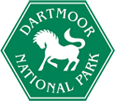Question 3: How do we manage Dartmoor's species and habitats?
Help students to use the descriptions of habitats and species below plus the factsheet to consider whether Dartmoor demonstrates high levels of biodiversity.
Dartmoor Habitats
There are a great variety of habitats on Dartmoor, some of which are nationally or even internationally important. They are home to many rare plant and animal species. There are large areas of blanket bog on the highest part of the moor and in the more sheltered, steep-sided valleys are broad-leaved woodlands. Between the valleys and the blanket bogs is a mixture of heath and grassland.
Dartmoor is of international importance for its blanket bogs, upland heaths, upland oakwoods and cave systems, and of at least national importance for its valley mires, Rhôs pasture and grass moor. Other notable habitats in Dartmoor National Park include species-rich haymeadows and hedgebanks, granite tors, torrent rivers and lowland heath.
Wildlife
Dartmoor is the largest and highest upland in southern Britain, exposed to strong winds and high rainfall. The soils are acidic and the area has been relatively undisturbed by intensive agriculture. These factors make the National Park especially interesting in terms of its wildlife.
Because of the climate and diversity of habitats there is a great diversity of species. Dartmoor is also an important reserve for those species that can withstand harsher conditions including some very rare plants and animals. Dartmoor is particularly noted for rare lichens, butterflies and other insects. There are also many birds of moors, heath and farmland to be found here.
Learn more about Dartmoor's habitats and species by exploring the Wildlife and Heritage section of our website.
You can also download our Wildlife and Habitats Factsheet (PDF).
Exploring biodiversity in more detail
In Resource 2 the narrator talks about the importance of links between species to make biodiversity in an ecosystem resilient (strong).
Now use Resource 5 to explore five important species on Dartmoor. Students could draw a diagram of the relationships between their chosen species and other species in the same habitat. Do any share relationships? Does this make the biodiversity on Dartmoor stronger or more fragile?
What are ecologists and Rangers doing at Dartmoor National Park to support species, habitats, ecosystems and the links between them?
Use Resource 6 to find out more about work to support populations of Marsh Fritillaries and Southern Damselflies, and to answer the initial key question:
Why do bees matter and what have they got do with biodiversity on Dartmoor?
Optional activity
As an extension, students could think about the six reasons listed in the YouTube video Resource 2, being mainly about biodiversity seen from a human perspective. In philosophy this would be utilitarian and sometimes it is termed anthropocentric - that is from a human perspective rather than ecocentric which would be a ‘nature-centred’ view of the world.
Ask the following questions:
- Does biodiversity have a value in itself beyond the uses to which humans might wish to use it?
- What is the ‘intrinsic’ value (the ecocentric view) of the ecosystem they have chosen to study in question 1?
- What about the Dartmoor species, Marsh Fritillaries and Southern Damselflies? Are they being managed for any of the anthropocentric reasons or for their value in their own right (ecocentric)?
